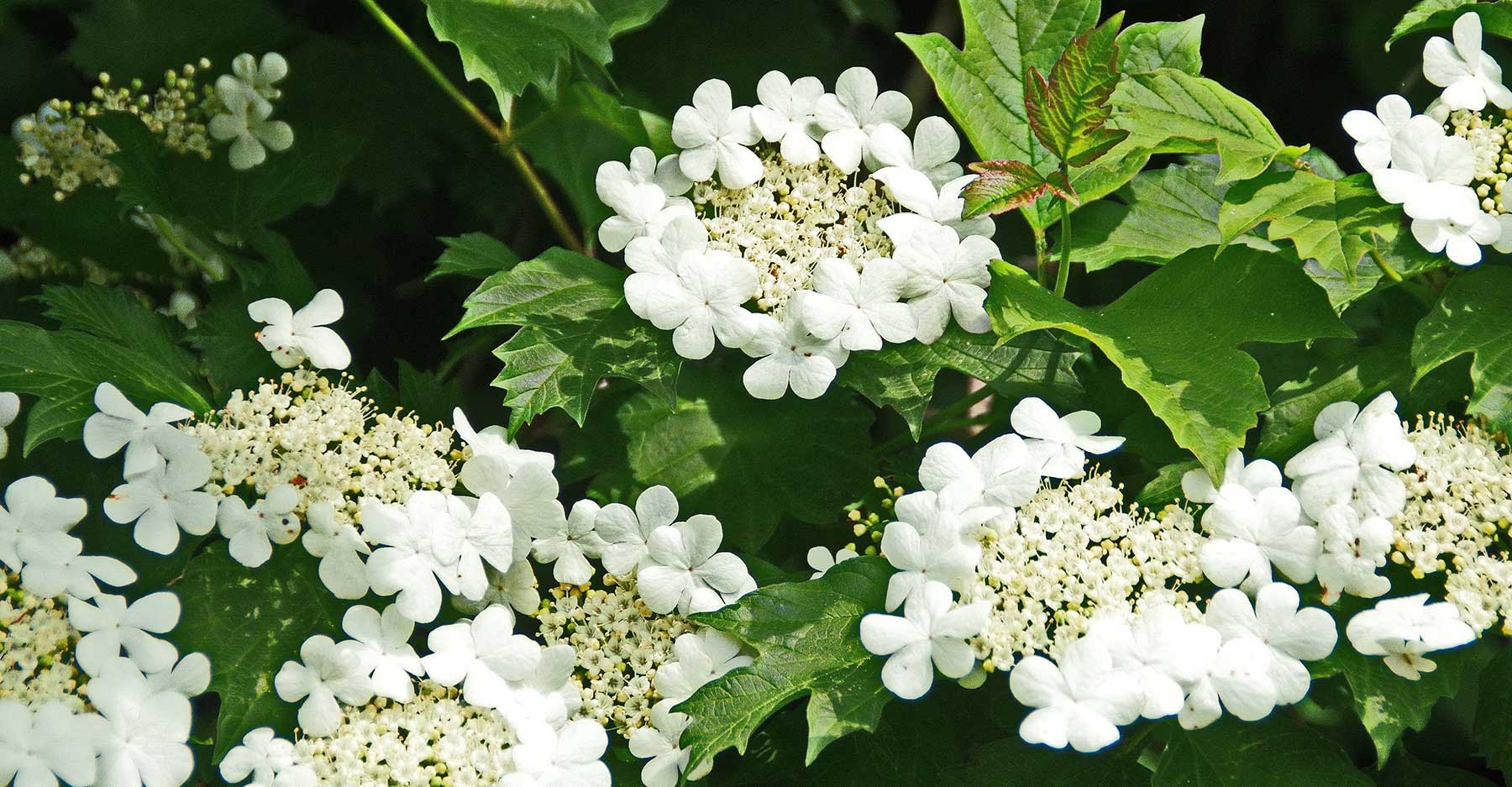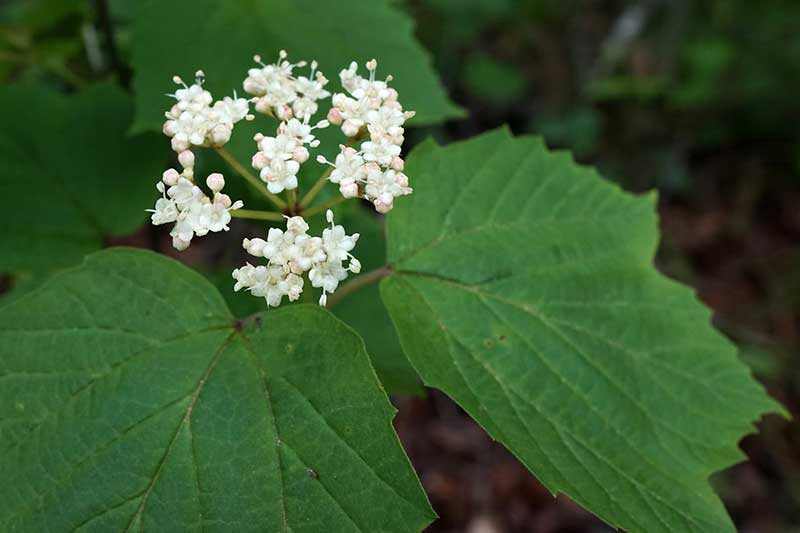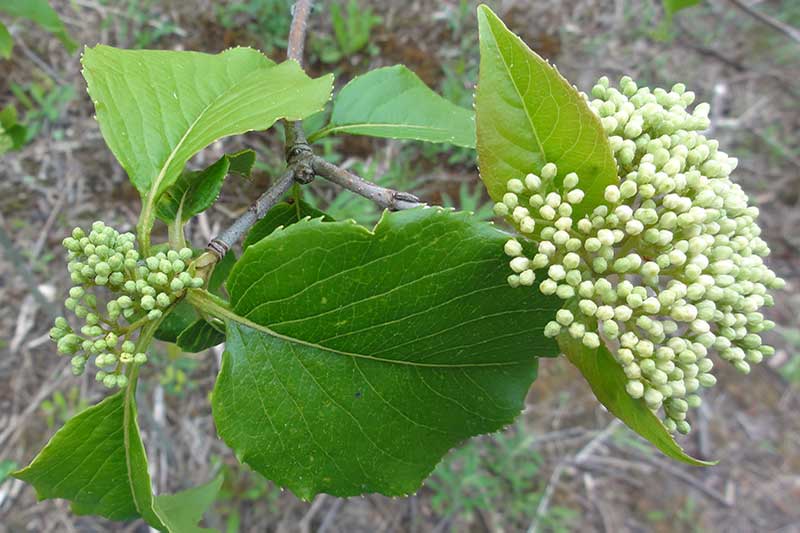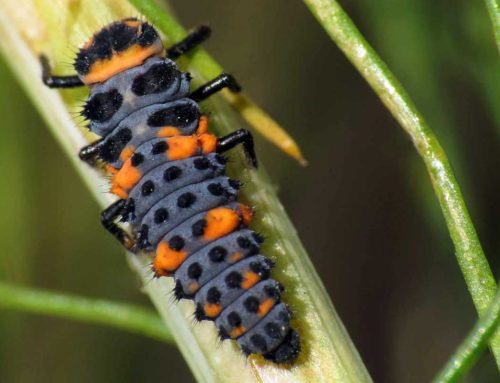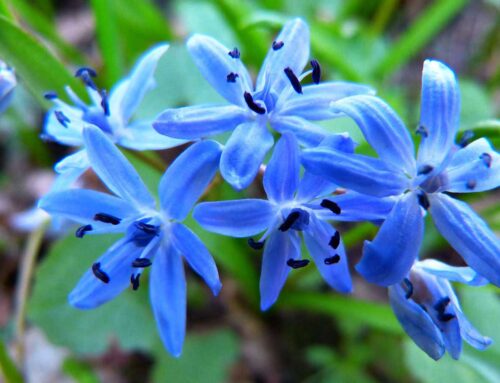A Selection of Versatile and Underused Natives
“The native viburnums are a beautiful and diverse group of plant species with some of the most unusual and nuanced autumn coloration in the eastern deciduous forest.” ”
Native Flowering Landscape Shrubs Loved by Birds and Butterflies
Viburnums, renowned for their white and many times fragrant flowers, fall color and berries, have long been popular shrubs. They are plants that just keep giving during all the garden seasons. Even though they bloom in the springtime, their flowers develop into berries providing food and nectar to a variety of wildlife providing sustenance, and their branching habit and foliage transforms into delightful autumn colors.
As members of the Adoxaceae or muskroot family, these shrubs are native across the Northeastern United States. Viburnums range in size from shrubs to small tress, with most native species ranging from 3 to 12 feet tall. The leaves of viburnums are oppositely arranged, simple with different leaf margins depending on the species, with its small white-to-pink flowers bearing a musky scent.
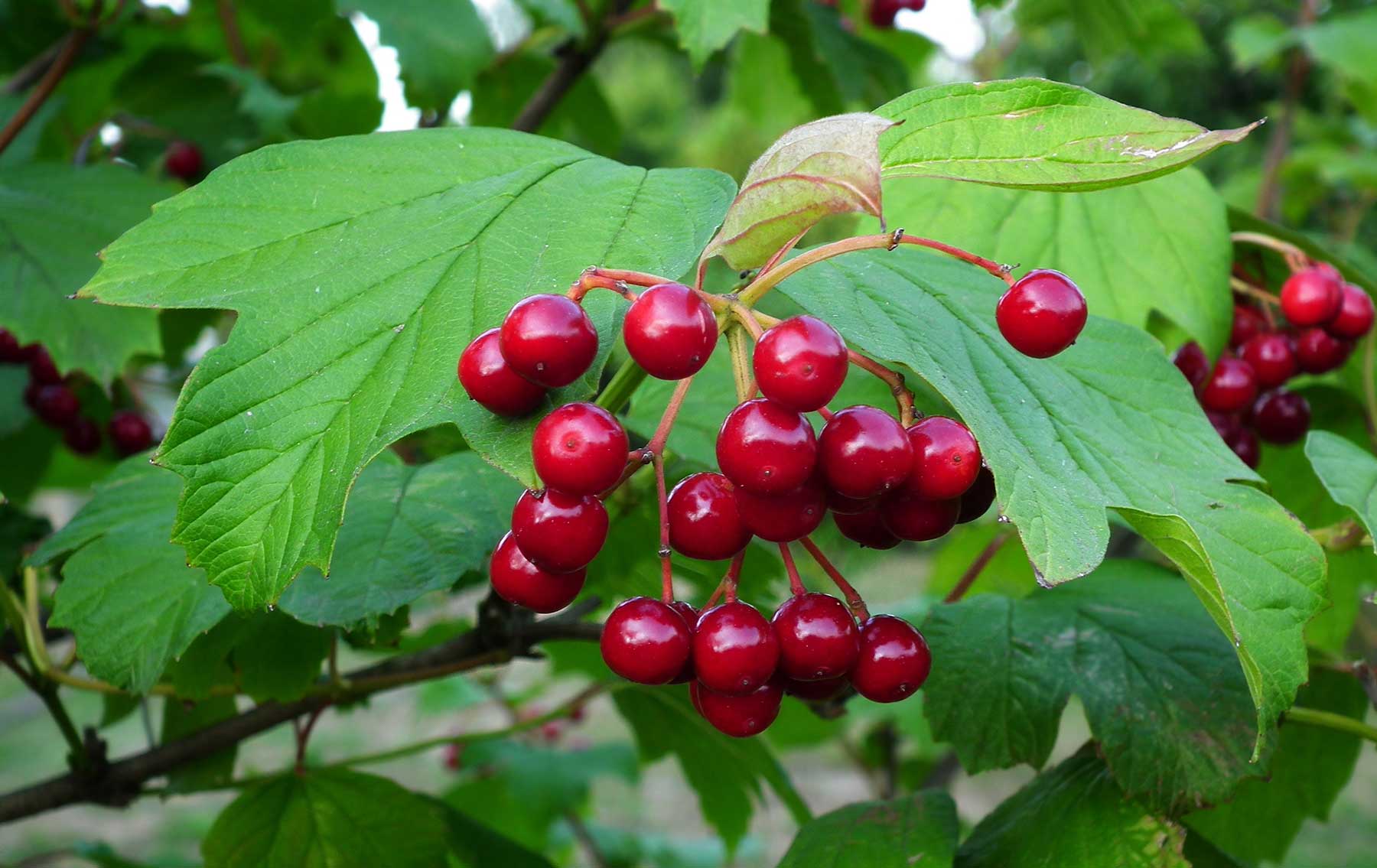 The viburnum’s flowers usually grow in tight clusters, but some species are characterized by large and showy white blossoms ringed around smaller flowers. The gorgeous fruits of viburnum are a great summer addition to any garden. The berries mature to either a rich blue-black or bright red and persist on the branches into winter. Ruffed grouse are known to frequently dine on the berries of highbush cranberry (V. trilobum or V. opulus var. americanum). Viburnums, with their pleasing shapes and bright colors, add visual interest to our landscaped beds and gardens , all the while encouraging wildlife to flourish in our suburban landscapes.
The viburnum’s flowers usually grow in tight clusters, but some species are characterized by large and showy white blossoms ringed around smaller flowers. The gorgeous fruits of viburnum are a great summer addition to any garden. The berries mature to either a rich blue-black or bright red and persist on the branches into winter. Ruffed grouse are known to frequently dine on the berries of highbush cranberry (V. trilobum or V. opulus var. americanum). Viburnums, with their pleasing shapes and bright colors, add visual interest to our landscaped beds and gardens , all the while encouraging wildlife to flourish in our suburban landscapes.
Many flying insects partake of the nectar in the floral bunches. Several species of butterflies and moths make an early home on viburnums as larvae. Eggs are deposited on specific plants by adults once they emerge in the spring. The caterpillars then spend the growing season dining on these tender leaf buds and growing fat on the bountiful lush green foliage.
Specifically, the spring azure butterfly (Celastrisna ladon) delights in visiting gardens of native Viburnum and flowering dogwood, and its larva munches on the leaves prior to developing into a shimmering adult. The snowberry clearwing, a hawk moth, also dines on viburnum leaves as a caterpillar. Viburnums play a vital role in these insects lives, serving as host plants. Viburnum, combined with native azaleas and chokeberries (both red and black), and planted under a canopy of larger trees provides for a maximum of plant species diversity and wildlife that can thrive within.
Having all of these benefits, viburnum are the perfect plant for any garden bed. With a minimum of winter care these native plants can and will attract and be of benefit to wildlife year round. They require very little pruning and pest and disease is relatively very low in this species of plant.
Viburnums native to the Northeastern U.S. include:
At Lincoln Landscaping cultivating the environment is our life and livelihood. It is our number one goal to help our clients create and maintain beautiful landscapes while reducing the impact on the environment. Whether you are interested in a pollinator landscape garden design and build or other landscaping or property management project; we can create for you an environmentally friendly, organic and beautiful property.
Lincoln Landscaping “The Natural Choice”
Mike Kolenut President & CEO
https://lincolnlandscapinginc.com
(201) 848-9699

